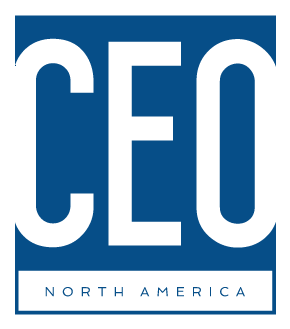People want to improve well-being at work, but first they need to know where it stands. Transparency through public disclosure is a good place to start.
Colleen Bordeaux Jen Fisher Anh Nguyen Phillips
Spurred by lingering fallout from the pandemic, financial pressures, and other factors, stress in the workplace continues to rise. A 2022 Deloitte cross-industry study confirms the scope of the problem: Only 59% of surveyed employees said that their well-being was good or excellent, and the most-cited factors acting against well-being across both employees and C-suite executives were a heavy workload or a stressful job (30%) and not having enough time because of long work hours (27%).
This could spell trouble for employers. When worker well-being (defined holistically to include physical, mental, financial, and social aspects) suffers, productivity often declines and health care costs frequently rise. Presenteeism, which costs US employers US$150 billion a year in lost productivity, can escalate. And that’s not all. Some four million workers have been voluntarily leaving their jobs each month in the United States alone—a ballooning exodus that has been termed the “Great Resignation”—and a lack of well-being is a leading suspect. A Randstad study found that 56% of employees age 18–24 say they would quit a job that prevented them from enjoying their lives; 38% of those 55–67 agreed.
The upside of well-being is just as compelling. People want to work for organizations where workers thrive. Fifty-nine percent of employees in the Deloitte study said they would seriously consider taking a job with a company that offers better well-being benefits than their current employer. High employee well-being can make an organization more attractive to customers and investors as well.
The challenge, though, is that it’s hard to know whether worker well-being—actual well-being, not just employers’ investment in it—is high or low. While some organizations track program and benefit usage or survey employees about their stress levels, these typical metrics don’t get to the heart of what’s essential to any organization where workers thrive: a culture that supports well-being. Today, people learn about how a particular organization’s workers experience well-being largely through word of mouth—Glassdoor, Vault, conversations with friends and family. But this information is often subjective, influenced by factors such as recent workplace events, listener expectations, and even a person’s mood.
But what if organizations publicly reported metrics on their workforce’s well-being? The desire for this is evident, as are the potential benefits. In the Deloitte survey, 55% of the employees and 77% of the C-suite executives believed that companies should be required to publicly report workforce well-being metrics. What’s more, a majority of both employees and C-suite executives said they would trust their company more if it publicly reported on well-being, and that they would be more likely to take a job with a company that did so.
Publicly disclosing metrics on worker well-being may seem radical, but it has a precedent: the evolution of environmental, social, and governance (ESG) reporting. As ESG has become more of a priority among customers, investors, and workers, companies responded by creating and publicly disclosing ESG metrics. These metrics eventually became so important that regulators in many geographies, including the United States, the European Union, South Africa, Australia, and China, now mandate their disclosure. Governing bodies have also been working to standardize ESG metrics and reporting frameworks, which would allow stakeholders to reliably compare organizations’ ESG performance.
The same could happen with well-being as public interest grows. Well-being touches every worker and their families, and many want something done about it. Recent media coverage has put well-being squarely in the public eye, elevating it as an important societal concern. The Great Resignation has sent employers scrambling to use every available lever, well-being prime among them, to attract and retain workers. For all these reasons, organizations have much to gain from metrics that can help them better understand worker well-being and communicate about it to their stakeholders.
Well-being metrics don’t have to be “squishy” or based wholly on self-reporting, though self-reported data would likely be a crucial input. Along with gauging workforce sentiment with surveys and interviews, organizations can measure observable proxies that assess well-being in an empirical way. For example, organizations could track the percentage of workers who use their entire time-off benefit, the amount of overtime people put in, or the volume of work-related emails sent on weekends. Attrition rates could shed light on the quality of workers’ relationships with their supervisors. Organizations operating in company-provided facilities can use frameworks such as the WELL Building Standard to gauge workers’ likely physical well-being at work. They could also analyze insurance claims to understand whether workers are seeking more or less medical attention over time. Combining metrics like these with explorations of workers’ lived experience would likely help leaders develop a nuanced, actionable understanding of well-being across the organization.
Organizations can benefit from sharing well-being metrics internally as well as externally. People at all levels want to feel they can be open about their well-being, especially as it relates to their work. Transparency among the C-suite is especially important. In the 2022 Deloitte study, 72% of the workers at organizations whose executives were transparent about well-being rated their own well-being as above average, compared with just 57% of workers at organizations with less-transparent executives.
It remains to be seen if well-being reporting will follow in ESG’s footsteps. But the growing recognition of well-being’s importance may mean that the process is already underway. Reporting on well-being could be the next evolution in disclosure—with the prospect of benefiting workers, employers, and society as a whole
Courtesy Deloitte. Click here for full article












